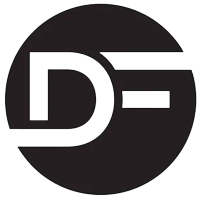Optimal Weight Training for 50 Year Old Male
If you are over 50 and aim to build muscle and strength, it’s crucial to train smartly, occasionally intensely, and never with your ego. Let me explain: Younger adults typically recover well between workouts. Thise aged 30-50 can maintain progress with minimal effort if they manage their diet and sleep. But for men over 50, the key lesson is knowing when to step back to ensure continued progress.
Train smart, not hard for optimal results.
David Farkas, Personal trainer and Coach in Valby, København/Copenhagen.
Unique Challenges of Building Muscle After 50
As we age, most physical attributes such as strength, flexibility, mobility, endurance, and coordination will start to diminish whether we want them to or not.
If you have been training your whole life, progressing at this stage is very demanding, and the risk versus reward ratio is off-balance. Therefore, your goal should be to maintain as much as possible and diminish the rate at which these attributes start to weaken.
If you are a beginner or intermediate, it’s never too late to start regaining or improving your physical attributes. At this stage, your recovery may not be optimal, so you need to maximize what you have.
Ideally, frequent and short training sessions of up to an hour, 3 to 4 times a week, will be sufficient if done with intent. Your workouts don’t necessarily have to focus solely on resistance training. Depending on your goals, incorporating a variety of training types could help keep you engaged and dedicated.
Knowing When to Step Back to Ensure Continued Progress
Periodising your training throughout the year means knowing when to step back to advance later. At different times, focus on various attributes (endurance, coordination, mobility, and flexibility) to enhance and progress towards greater success. To develop all aspects, some elements must take a backseat to allow others to grow. For example, working on strength and endurance simultaneously isn’t ideal. Strength training requires a calorie surplus, while intense cardio burns the calories needed for recovery.
4 Attributes and Why You Should Work on Them
I will break down each attribute, how they are connected, and why you should work on them:
Endurance
I’ve seen men eliminate “chronic tiredness” by improving their stamina and endurance. As their endurance improves, their resistance training intensity also increases since they don’t get out of breath as quickly during longer sets. If you want a fitter body for the long term, aim to run at least 3km without significant effort. Endurance is often tested in real life, and my clients frequently tell me it’s satisfying to know they “still got it.” These opportunities arise during holidays, events, or time with family and friends. The sense of outperforming expectations and doing better physically and mentally than peers is worth every penny and minute invested.
What Endurance Training to Choose?
Everyone enjoys different types of endurance training, and some activities translate better than others (a good swimmer isn’t necessarily a good runner and vice versa). Ultimately, you are the judge, so stick to your preferences because sustainability comes from enjoyment. The main goal is to maintain good cardiovascular health. Being over 50 doesn’t mean you should get used to running out of breath during daily activities.
Coordination
I’m sure you have experienced the frustration of seeing someone explain a movement and, when you try it, your brain knows what to do, but your body just won’t follow. Over the years, your body has learnt unique and different patterns through which you interact with your environment. Ask two people to lift something off the floor, and it will look different; ask two people to pull or push something, and again, it will look different from one another. If these patterns are very different from how your body works best biomechanically, they can lead to imbalances in the long term, which is where issues and pains arise.
Reconnect with the Body
I focus on helping you reconnect with your body first and then occasionally test your limits. My clients have successfully managed or alleviated pain by relearning how and when to use the necessary muscles during training or daily activities. For example, while cycling, you can focus on different muscles to alleviate acute or chronic pain in your knees or back without altering your routine.
Now, since most of the things we do happen in front of us, we lose the ability to move well side to side, up and down, or backwards. Something as simple as skipping two steps can sprain your ankle if your reflexes are slow or your body weight distribution is off while walking (sides and muscles compensating for one another). Most injuries that occur after 50 are not entirely due to a lack of strength but rather a lack of coordination when expressing that strength.
As a personal trainer, I work with four stages of learning:
- Unconscious incompetence (discovery phase)
- Conscious incompetence (learning phase)
- Conscious competence (applying phase)
- Unconscious competence (intensity phase)
First, I want you to move in different ranges of motion and positions (discovery and learning phase). Next, we establish your capabilities and test your limits safely (applying phase). Finally, once the technique is mastered, we start pushing those limits (intensity phase).
Mobility and Flexibility
Mobility refers to your joints, while flexibility refers to your muscles. These terms are often mistaken as synonymous. In most cases, when we perceive someone as “flexible,” they are actually just mobile. Flexibility is hard to see with the naked eye unless you are very close to the person.
From my observation, mobility and flexibility are the most overlooked attributes in men over 50. You will struggle with other activities if you cannot reach overhead or bend your knees and hips safely. Great mobility can prevent the need for massages and therapies. Many men prefer to spend on physiotherapy rather than address the root problem. Neglecting mobility and flexibility creates bottlenecks in training and daily activities, affecting your quality of life.

